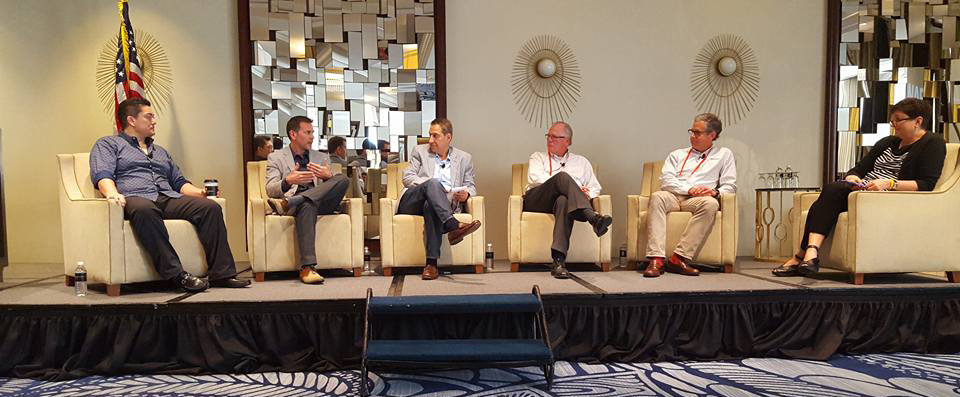One of our jobs in the PR department is to research and secure panel speaking opportunities for our clients. Speaking on panels is a great way to generate awareness of your organization and its leaders while positioning you as an expert on a topic. While panel speaking is less intimidating than delivering a keynote solo, there are some nuances for which to prepare.
1) Research—Since you aren’t controlling the whole presentation, it’s best to be over-prepared. Get to know the moderator. If there isn’t a phone pre-interview booked with him, book one. You’ll get to know his style and what he’s trying to get out of the panel. Research your fellow panelists so you can determine your niche and so you can feel confident throwing a question to another panelist if they are more qualified to answer. Any time you can mention the other panelists throughout the presentation shows a friendly demeanor and inclusiveness.
2) Decide on your key points and make them first—Focus on three or four points you really want to make and stick to those. Your time is limited and you never know where the discussion might go (I once attended a social media panel that ended up being a 30-minute discussion about one specific social media analytics app). Make your key points as soon as you can. If you get to repeat your main points at all, even better.
3) Find a short story or anecdote to illustrate your point—Since you are sharing the stage with several people, telling a long story or case study is either rude or impossible. Many panels do not allow for images or videos, so find a short story or some memorable phrases to bring your message to life. Your PR team should be able to help you with this.
4) Don’t forget you are on stage even when you aren’t talking—I’ve been to too many events where panelists are zoning out, writing down their next talking point or even checking their phones while others are talking. Be courteous to your fellow panelists and stay engaged the entire time. Be aware of your body language. The audience is still looking at you, so sit up straight and minimize distracting behavior such as playing with hair, a pen, etc. If a panelist is making a statement you disagree with be aware that your eye rolls are obvious.
5) Clear your schedule for afterwards—Most panels are either luncheons or part of a conference with a break after. Oftentimes after the panel presentation, audience members will want to introduce themselves to you and exchange business cards. Make time to do this. You never know who in the audience will end up being a meaningful connection. If you have the time, emailing a follow-up note to those who take the time to meet you is ideal.
What are your panel-speaking tips? Let us know in the comments.

President Scott LoSasso participates in a recent panel presentation on digital marketing trends.


